Soviet and German tank losses in 1942 year. Be careful with the statistics!
As you know, a number of disadvantages T-34 arr. 1940, such as an unsuccessful transmission, insufficient resources, a narrow tower shoulder strap, "blindness" and a lack of an 5 crew member, were obvious to the top leadership of the Red Army before the war. However, in 1941 and in 1942, the stake was made not to eliminate all this, but to give maximum manufacturability and simplify the existing design of the tank. Our top military leadership considered it necessary to deploy mass production as quickly as possible and to provide the Red Army on a massive scale with tanks with anti-missile booking and an extremely powerful 76,2 mm cannon for its time, even if they have serious shortcomings. It was assumed that this would be better than a serious rework of the structure, and the associated drop in production volumes.
And what did we get?
What were the consequences of this decision? You can say that 1942 g became one of the most important stages for our "thirty-four". At the beginning of this year, it was still a fairly raw combat vehicle, moreover, it was not yet very well adapted for mass, mass production on equipment that existed at that time in the USSR. Its production was carried out at three factories, two of which started to produce T-34 before the war (Considering the Nizhny Tagil plant as a “continuation” of Kharkov). By the end of the year, the T-34 was already produced at 5 factories, and this taking into account the fact that STZ ceased production of tanks, due to the fact that the battles in Stalingrad were already fought on its territory. That is, if in 1941, in addition to STZ and Nizhny Tagil Plant No. 183, it was possible to expand the production of T-34 at the Gorky Plant, then in 1942, the Chelyabinsk, Omsk and Sverdlovsk plants were added to them.
In other words, the task of mass construction of T-34 in 1942 was solved. Of interest is the ratio of medium and heavy armored vehicles produced in 1941-42. in the USSR and Germany. In 1941, the production facilities of the Third Reich gave the Wehrmacht and the SS 2 850 T-III medium tanks T-IV, commander tanks based on them, as well as StuG III assault guns, which, with 22 t mass, had a reservation comparable to that of T-III but an incomparably more powerful 75-mm gun that can quite successfully fight with our T-34.
At the same time, the USSR in 1941 was able to produce 3 016 T-34, that is, it can be said that in terms of medium armored vehicles, the production capabilities of the Soviet Union and Germany turned out to be quite comparable. True, the situation was significantly improved by the release of heavy tanks KV, which in 1941 was created by 714 units, but still it must be stated that the USSR had no multiple advantage in producing medium and heavy armored vehicles in 1941: our country surpassed the German issue by about 30%.
But in 1942, the situation changed dramatically, because the USSR managed to produce armored vehicles 2,44 times more than the Third Reich - and the main role here was played by the increase in production of T-34.
The cost of production of one tank in comparison with 1941 was about 1,5 times (plant # 183, from 249 256 rubles to 165 810 rubles), although, of course, in new plants it was higher in 1942. . Many minor design flaws managed to be eradicated, and in general, by the end of 1942, the army received a much more advanced machine than the T-34 of 1941 was.
However, alas, the main design flaws were not eradicated - the T-34 remained difficult to manage and not very reliable a tank, the commander of which was extremely lacking review in battle. In other words, surpassing the bulk of German tanks in armor and armament, he was inferior to them in situational awareness and reliability, which allowed experienced German tankers, gunners and infantry to select effective tactics of confronting domestic medium tanks. Of course, the counter-booking and the powerful armament of the T-34 were excellent “arguments” that, if used properly, could lead success in battle to the side of the Soviet tank crews. But for this it was necessary to have combat experience, which the Wehrmacht still had more, and besides, the spent interaction with its own artillery and infantry, which, alas, the Red Army simply categorically lacked.
As we said earlier, at the end of 1941, the tank forces of the USSR were forced to "roll back" to the level of brigades - that is, purely tank units. And although at the beginning of 1942, the Red Army began the formation of larger units, tank corps, at first they were poorly balanced structures that clearly lacked field artillery and motorized rifle troops, as well as other important support units. Such units could not fight on their own with the same efficiency with which the German “Panzervaffe” did it, who had both artillery and motorized infantry in abundance, and who knew how to use all this in a comprehensive manner. At the same time, attempts of joint actions of the same tank brigades with rifle corps of the Red Army often led to the fact that infantry commanders illiterately used the tank formations assigned to them and did not provide an adequate level of interaction with their units.
The situation was corrected gradually, during the entire 1942, the states of the tank corps were constantly improved. States established in January 1943 in accordance with Decree No. GOKO-2791ss can already be considered optimal, but, apparently, at least part of the tank corps had a similar structure already in 4 quarter of 1942, and perhaps even earlier .
In other words, we can say that the “stars came together” precisely at the beginning of 1943, when:
1. The Red Army received a large number of T-34 tanks, free from many childhood diseases, although they still retained their main shortcomings that had been identified before the war;
2. The states of higher tank formations were close to optimal, and they fully met the requirements of a modern war of maneuver;
3. The troops gained combat experience, allowing them to successfully fight even against the best units of the Wehrmacht.
But all this happened only at the end of 1942. But at 1942 itself, we had to pay for the technical shortcomings of the tanks, for the lack of combat experience, for the imperfection of the states of tank formations a high price.
About the Soviet and German losses. At first only numbers
Let's look at the balance of losses of medium and heavy armored vehicles of the USSR and Germany in 1942. But the author warns immediately - the figures in the table should be treated very, I emphasize, very carefully! Below will be given all the necessary explanations.
So, we see that the USSR greatly overtook Germany in the production of armored vehicles, releasing 1942 2,44 times more than medium and heavy tanks and SPGs, although, strictly speaking, Su-76 with its 11,5 tons of mass on medium armored vehicles didn’t pull at all ". But on the other hand, she was armed with an 76,2-mm ZIS-3 gun, which quite confidently hit virtually any enemy tanks and self-propelled guns, with the exception of the Tiger, of course, therefore, “for the purity of the experiment” we took into account its production.
However, having overtaken the Third Reich in the production of tanks, we, alas, overtook it in terms of the losses that the Red Army, according to the above data, averaged 3,05 tanks per German. As a result, the following situation has arisen: at the beginning of 1941, the state of the Red Army tank forces can be described as catastrophic - we had 1 400 medium and heavy tanks against 3 304 tanks and SPGs from the Wehrmacht. But thanks to the efforts expended on organizing mass production of tanks, we were able, despite very large losses, to ensure the Red Army approximately 44,7% superiority in the number of heavy and medium tanks at the beginning of 1943.
But it is not exactly
Have you already been horrified by the ratio of losses of Soviet and German tanks in the amount of 3: 1? Well, such is the statistics - and now let's understand why the above data is incorrect.
The attentive reader probably already paid attention to the fact that the figures in the table “do not balance” among themselves: if we add to the presence of tanks at the beginning of the year the number of armored vehicles produced and subtract losses, the final figures will be completely different than those given as balances at the end of the year. Why?
To begin with, let us remember that tank losses can be divided into two categories - returnable and irrevocable. Both those and others, of course, make the tank non-operational, but tanks falling into the first category can be restored. They, in turn, are divided into 2 categories: those that can be repaired in the field, and those that can only be restored in the factory. The tanks, which are so badly damaged, are considered irretrievable losses, that even in factory conditions it is already irrational to restore them - it is easier and cheaper to build new ones.
So, the author took the figures of Soviet losses enlarged, according to the materials of the site tankfront.ru, where they are rounded up to hundreds. They are generally more or less true, deviations, if any, are relatively small. At the same time on the above site, they were summarized in the balance sheet, which we give below:
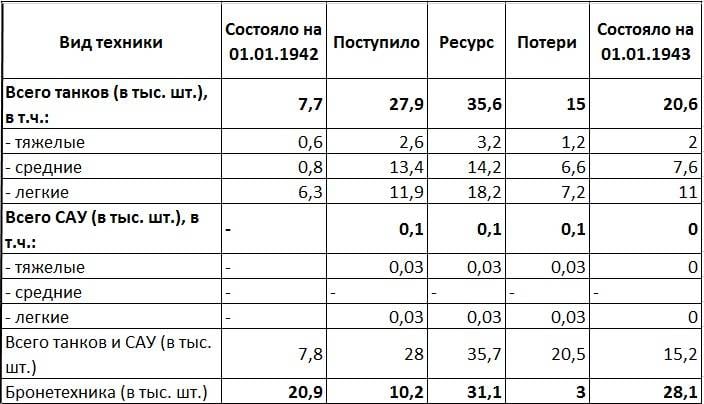
We see that the figures in the table correspond to the formula: “the actual number of tanks at the beginning of the year + the number of vehicles transferred to the troops for the year - the loss per year = the number of tanks at the end of the year”. Why? Yes, because the number of tanks received by the troops is greater than their release. As we said earlier, the T-34 was produced in 1942 a little more than 12,5 thousand units, and no other medium tanks were produced in the USSR at that time. At the same time, according to the above table, the number of medium tanks is 13,4 thousand, that is, almost 900 machines more. With heavy tanks, the picture is even more interesting - they were produced in 1942 g 1,9 thousand units, but put in the army - 2,6 thousand units! Where does this difference come from?
The options are, in fact, only two - this is either a lend-lease technology, or tanks, which for some reason were not taken into account in the general issue, and this could only be reconstructed tanks. Moreover, if you can still assume that a certain number of Lend-Lease cars that arrived in 1942 passed through the category of medium tanks, then we certainly didn’t supply heavy tanks - simply because of the lack of such tanks from our allies.
In other words, the table for the Soviet Union takes into account not only armored vehicles newly produced and delivered from abroad, but also reconstructed tanks. But to what extent they are included in the statistics - the question is, of course, interesting.
The fact is that some time ago, there was such a point of view that the USSR tank plants did not keep separate records of armored vehicles and reconstructed at the plants after damage to tanks and self-propelled guns. The fact is that all of them, of course, when ready, passed military acceptance, which took into account only the total number of transmitted vehicles. Unfortunately, the author of this article was unable to find out this way, but if this is the case, there are some T-12,5s released in 34 in 1942. There are some tanks that were not re-created, but restored.
In this case, the additional roughly 900 medium and almost 700 heavy tanks the difference between manufactured and transferred to the troops is the number of armored vehicles repaired in the field.
If the numbers 12,5 thousand. T-34 and 1,9 thousand. KV - it's still just a technique, excluding repaired at the factories, then the difference is - this is the tanks that were restored in the factory.
But, be that as it may, the following is obtained. In addition to the lost tanks, all the return losses of tanks (the 1 case described by us), or some of the return losses, ie, tanks that were restored in the factories. In other words, in the reported losses of the Soviet armored vehicles - 6,6 thousand. Medium and 1,2. Thousand heavy tanks "sit" as the irretrievable loss, and return. The latter could be in total losses in whole or in part (in volumes requiring factory repair), but they are absolutely certain there.
But the Germans took into account only and exclusively irretrievable losses. The fact is that the author made calculations of German tanks on the basis of the book of B. Muller-Hillebrand “Land Army of Germany 1933-1945”, which is considered the “golden fund” of literature on the Wehrmacht. But in this book, apparently in the part of the release of German armored vehicles, it is the new issue that is presented, without overhaul of damaged tanks and SPGs. Apparently, B. Muller-Hillebrand simply did not have data on the return losses of Wehrmacht and SS tanks, which is why he, in the appropriate section, cited only such data for only the 4 month, from October 1943 g to January 1944, inclusive. It must be said that the return losses of the Germans for these 4 months were very large - 10 259 tanks and SPGs were restored in field conditions, and 603 - in factory conditions. In this case, the author points out that tanks of types T-III and T-IV were being repaired. Well, since the tables for the production of armored vehicles do not contain those issued from the T-III factories during the specified period, this clearly indicates that the indicated table does not take into account the restored vehicles.
At the same time B. Muller-Gillebrand gives, at first glance, comprehensive data - both the monthly production of armored vehicles, and its remnants in the troops at the beginning of each month, and production ... The only problem is that these numbers categorically "do not fight" with each other. Take, for example, tanks "Panther". As you know, at the beginning of the war, these tanks were not produced, but, according to B. Muller-Hillebrand, until December 1944 g inclusively they were made 5 629 machines. The losses of the “Panther” through December 1944, inclusive, according to the “Land Army of Germany 1933-1945”, amounted to 2 822 tank. A simple arithmetic operation suggests that in this case the Germans on 01.01.1945 should have had 2 807 “Panther”. But - that's bad luck! For some reason, according to the data of the same B. Muller-Hillebrand on 1 in January 1945, the Germans had only the 1 964 tank. Sorry generously, but where is the 843 Panther? The same is observed with other types of German armored vehicles. For example, on the same 1 in January 1945, according to the production data and the losses of the T-VI Tiger tank, the 304 units were to remain in the ranks. this legend "Panzervaffe" - however, according to the data on the remains, there were only 245. Of course, the difference in 59 machines somehow “does not look” against the background of 843 “Panther”, but in percentage terms the figures are quite comparable - the Germans lost almost 30% “Panther”, and 19,4% “Tigers” relative to those what should be in order!
And this can only talk about two things - either the German statistics of tank losses lie to us without blushing, and in fact the losses of German armored vehicles were higher than those declared, or ... everything is correct, only irretrievable losses are taken into account in the loss tables. Then everything becomes clear - on the 01 of January 1945 the same Germans had the 1 964 “Panthers” in the ranks, and the 843 machines were disabled and inefficient, but could be returned to service after appropriate repair.
But maybe the Germans and the Red Army had the same thing - tanks and self-propelled guns, which were being repaired in the field, did not feature either losses or output, and only irretrievable losses and tanks that required factory repairs were taken into account in them. Mathematically, this is possible, but historically it is not, because in this case we will have to admit that the Germans had 1 “Panthers” accumulated on the 1945 in January 843 in January, while waiting for repairs. The figure is completely impossible, and not confirmed by any sources.
Thus, when we look at the statistics and see - in 1942, the Germans lost 2 562 medium and heavy tanks and SPGs, and the Russians lost 7 825 (approximately) similar combat vehicles, we should not forget in any way that see before us incomparable values. Just because the Germans took into account only irretrievable losses, and we have also returnable, or at least some of them. And, obviously, if we compared not “warm to soft”, then the loss ratio would be somewhat different, and not 3 to 1 not in favor of the Red Army.
But the strangeness of German statistics has not yet ended - they can only be said to begin. Let's look at the estimated remnants of the tanks of the Third Reich as of the end of 1942 g, or rather, on 1 January 1943 of the year.
That is, when we see, for example, that the Germans should have had 1 168 assault SAUs, but only 1 146 was listed, this can be explained by the fact that the remaining 22 SAUs were damaged and needed repair. Not enough, of course (we will return to this issue a little later), but when the actual balance is less than the calculated one, this can be explained and understood. But what to do when this residue is larger? T-IV tanks from the Germans, taking into account their production and losses, should have remained 1 005 machines, where did they come from the whole 1 077? Where does the "extra" 72 tank come from? The wizard in a blue helicopter flew in, with a racially-correct magic wand in his breeches pocket, or what?
This phenomenon can be explained only by the fact that in 1942, the number of return losses was less than the number of tanks repaired. Since neither one nor the other is included in the statistics of Germany, with their consideration of 72, the “magic” means of where the tanks came from can be explained. And this once again confirms the author's thesis that only irretrievably lost in German losses were taken into account, and in production only new tanks and self-propelled guns. If the author was wrong, then we have to admit that German statistics lies to us, yielding mathematically impossible data.
But here's the thing ... Let's remember what happened on the fronts at the end of 1942. Well, of course, the Battle of Stalingrad! In which, according to the German generals, the Wehrmacht suffered very heavy losses, including in technology. Could it be that, as of 01.01.1943, the Germans had only a few dozen tanks and SPGs in repair? On all fronts including Africa? Oh, something hard to believe.
Let's take a look at what. According to German data, in December 1942, the Germans lost the entire 154 medium tank and SPG. In January, 1943 losses increased to 387 units. And in February they reached a record, simply unrealistic value, which had no analogues during the whole of the Second World War - in February 1943, the Wehrmacht reported on the loss of 1 842 tanks and SPG!
That is, for a second, for the entire 1942, the Germans, according to their data, lost 2 562 medium and heavy tanks and SPG, or an average of 213-214 tanks per month. And then, in 1943, for February alone - more than 1,8 thousand units of medium and heavy armored vehicles, or almost 72% of last year’s annual losses? !!
Something ends here do not meet.
According to the author, the following has happened. The fact is that B. Muller-Hillebrand, in his own words, took his statistical data from surveys on the state of armaments published monthly by the German Army Armaments Directorate. So there is a persistent feeling that when the Red Army in the tail and into the mane crushed the Wehrmacht near Stalingrad, the German commanders in the field had no time for reporting to their superior authorities. It is quite possible that the army of Paulus who appeared in the boiler did not submit such reports at all, or presented them, but gave them erroneous data, which, given the actual state of the German forces, would be extremely surprising.
So, as you know, 2 in February, the northern grouping of the 6 th army surrendered, and its southern part, together with Paulus himself, surrendered two days earlier. And after that, the Germans had the opportunity to clarify the data on their tank losses, but since backdating the reports was somehow not comme il faut, they simply wrote off their 1943 in February.
In other words, it is quite possible, and even very likely, that the Wehrmacht, in fact, did not lose 1,8 thousands of tanks during February 1943 because some of the armored vehicles were lost to them earlier, simply these losses were not reported in a timely manner. But, in this case, we again come to the fact that in fact, even the irrecoverable losses in 1942 alone, the Germans had more than their statistics show.
But this is not all. The fact is that every successful military operation has several stages, and, of course, this fully applies to the Stalingrad operation. First, when our troops break through enemy defenses, we suffer casualties. Then, when our troops with a thin line embrace the “cauldron” into which large masses of the enemy's forces landed, and this enemy with all its forces from inside and outside tries to unblock this cauldron - we also suffer losses. But then, when the enemy’s forces run out, and he capitulates - at this moment he suffers simply colossal losses that far exceed all that we have lost before.
So, the statistics “by years” are just “lame” by the fact that the above proportions can be violated in it. We suffered heavy losses in order to stop and surround Paulus’s 6 army, of course, not only in casualties but also in tanks, and all this was taken into account in 1942 statistics. But all the benefits of our operation were “transferred” to 1943 year. In other words, besides all the above, it is necessary to understand that at the end of 1942 we made a certain “contribution” to losses in our future success, but we did not even have time to recover from the enemy “in a row”. Thus, statistical calculations for calendar 1942 will not be indicative.
It would be much more correct to estimate the losses of the tank forces of the USSR and Germany not for 12 months 1942, but for 14 months, including January and February 1943. Alas, the author does not have accurate data on the losses of the national armored vehicles monthly. Nevertheless, it can be assumed that for the period from January 1 1942 to 2 February 1943 inclusive, the Germans lost approximately 4,4 thousand medium and heavy tanks and self-propelled guns, and the Soviet troops - about 9 000 units. But Do not forget, again about the fact that in our 9 000 units. Some part of the return loss is also “sitting”, and the German 4,4 thousand are only irrecoverable losses.
And so it turns out that the real ratio of casualties of armored vehicles during this period is not related to 3 to 1, but rather, even less than 2 to one, but still, of course, not in our favor.
Alas, that was the price of the insufficient experience of our soldiers and commanders, the suboptimal states of the tank forces and the technical shortcomings of our tanks - including, of course, T-34. That is why the title of the cycle of articles appears "Why T-34 lost to PzKpfw III ...". This does not mean, of course, that in the aggregate of the combat qualities of the T-34, it was once inferior to the German "treshka". But the fact is that during the 1941-1942 period, the German army, armed mainly with T-III (at the beginning of 1942, the share of "treshki" in the total number of medium armored vehicles was 56%, at the end of 1942 g - 44%) she knew how to inflict much more heavy losses on tanks than she carried herself
By the way, I anticipate the question of a careful reader: “Why does this author compare the total losses of German tanks with the losses of tanks in the USSR? After all, Germany fought not only on the Eastern Front, but, for example, in Africa ... ”.
Well, I answer with pleasure. The fact is that I have a persistent feeling that B. Müller-Hillebrand took the total losses of the German tanks not at all common, but only those that were incurred on the Eastern Front. Just to remind you that 26 in May 1941. Rommel began the battle that went into history as the "Battle of Gazalli". At the same time, before the beginning of June, he managed to attack, get involved in a battle with British tank forces, incur serious losses from the fire of 75-mm cannons of Grant tanks and get surrounded.
Obviously, Rommel's divisions suffered sensitive tank losses. Nevertheless, according to B. Muller-Hillebrand in May 1941, the Third Reich lost 2 (in words - TWO) tank, one of which - T-III, and the second - commander. Such a level of losses is quite acceptable if we are talking about non-combat losses unfolding on the Soviet-German border troops, but it is absolutely impossible for two tank divisions leading intensive battles during 6 days. Incidentally, from January to April 1941, according to B. Muller-Hillebrand, the Wehrmacht did not have any losses in tanks.
Oh, this German statistics!
To be continued ...
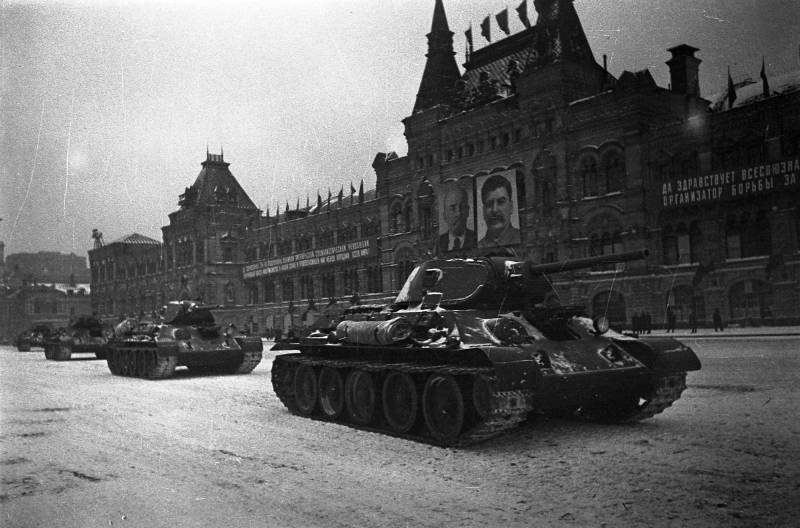
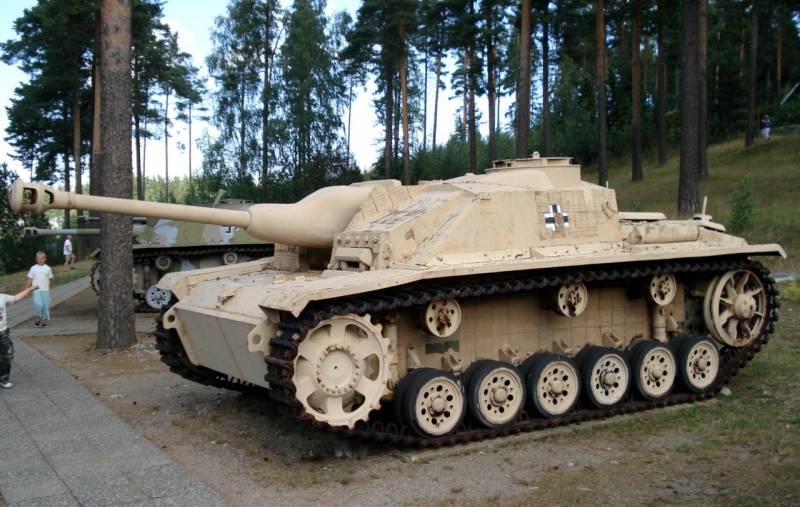
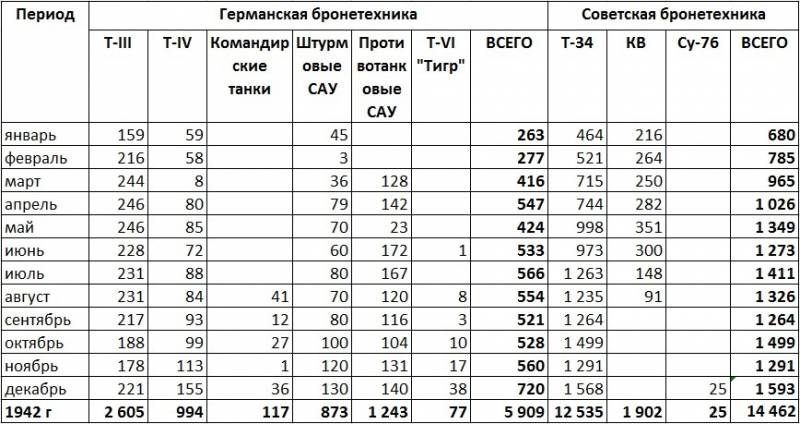

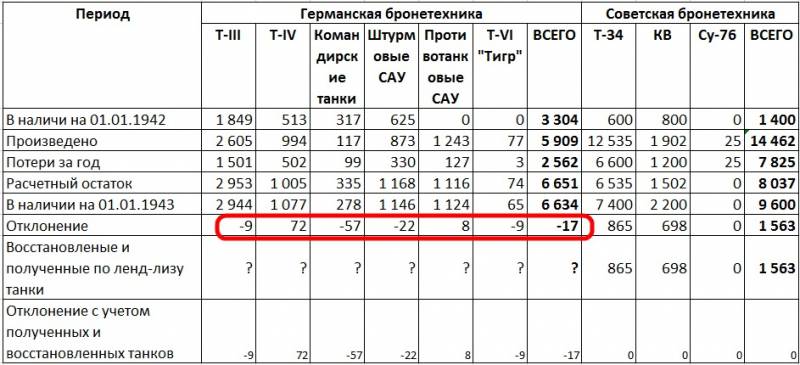
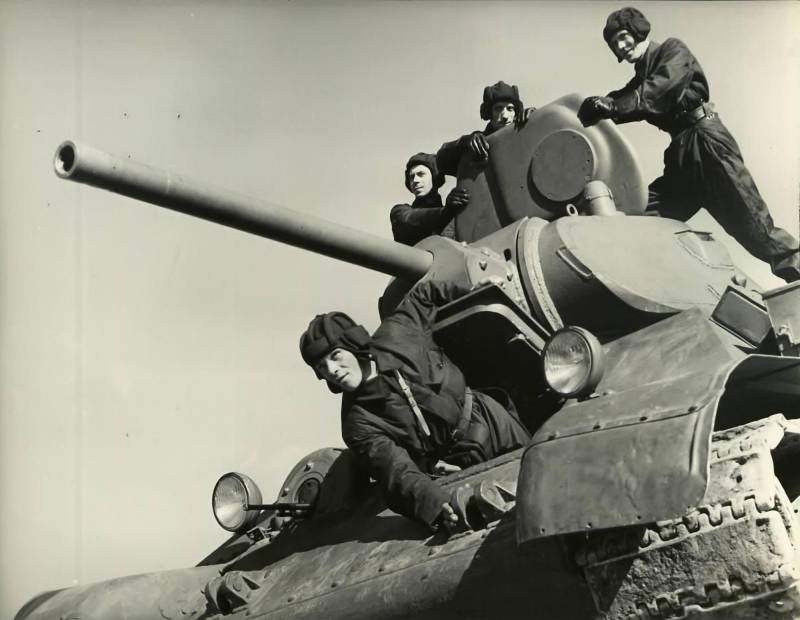
Information